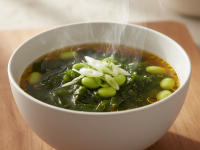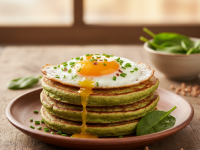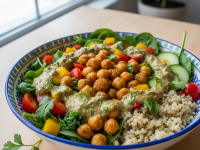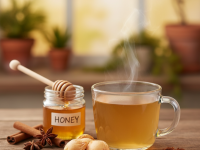Ever found yourself at the end of a glorious summer watermelon, looking at the pile of green rinds and wondering… “what if?” If so, you’re in for a treat! As someone who absolutely loves minimizing food waste and exploring unexpected culinary delights, I’ve stumbled upon a secret that’s too good not to share: watermelon rind pickles. Trust me, it’s not as strange as it sounds; it’s a refreshing, tangy, and incredibly satisfying snack that turns what most people consider trash into a true treasure.
My journey into the world of rind pickling started years ago. I remember vividly, after a particularly large family BBQ where mountains of watermelon were devoured, I was tasked with cleaning up. Staring at the overflowing bin of green rinds, a faint memory from my grandmother’s kitchen resurfaced. She, a true pioneer of “use everything, waste nothing,” used to make what she called “watermelon preserves,” which, upon closer inspection as an adult, was essentially a sweet and tangy pickled rind. Intrigued, I decided to dive in. My first attempt was… edible, but a bit bland. It tasted like I was missing something. But I didn’t give up! With a little research, a lot of experimentation, and a few more watermelons sacrificed to the cause, I finally perfected a recipe that hits all the right notes: bright, zesty, slightly sweet, and wonderfully crisp. And today, I’m sharing that very recipe with you.
Why Pickle Watermelon Rinds? The Zero-Waste Revelation
Beyond the sheer deliciousness, there are several compelling reasons to embrace watermelon rind pickles. First and foremost, it’s a fantastic step towards a zero-waste kitchen. We’re all trying to be more mindful of our environmental footprint, and transforming what would otherwise be discarded into a delicious food item is a big win. Think of all the nutrients and potential flavor locked away in those seemingly useless rinds!
From a culinary perspective, watermelon rinds have a surprisingly neutral flavor, making them an excellent canvas for absorbing all sorts of briny goodness. Their texture is firm and crunchy, especially when prepared correctly, which holds up beautifully to pickling. Plus, they’re packed with beneficial compounds, including citrulline, an amino acid often found in the white part of the rind, known for its potential health benefits. So, not only are you saving waste, but you’re also adding a unique, healthy ingredient to your plate. It’s truly a win-win-win situation!
What You’ll Need: The Simple Ingredients
The beauty of this recipe lies in its simplicity. You likely have most of these ingredients in your pantry already. No fancy equipment needed, just a few basics and a little patience.
- Watermelon Rinds: From one medium to large watermelon. This is your star ingredient!
- Water: For blanching and the pickling brine.
- White Vinegar: Essential for the pickling process, giving that tangy kick.
- Sugar: A little sweetness balances the tang. You can adjust this to your preference.
- Salt: Kosher or pickling salt works best. Avoid iodized salt as it can make your brine cloudy.
- Pickling Spices: This is where the magic happens! My go-to combination includes:
- Garlic cloves (peeled and smashed)
- Dill sprigs (fresh is best!)
- Mustard seeds
- Coriander seeds
- Red pepper flakes (for a little heat, optional)
- Black peppercorns
- Bay leaves
- Sterilized Jars: Pint or quart-sized caing jars with lids and bands.
The Recipe: Step-by-Step Guide to Pickled Perfection
Ready to transform those rinds? Let’s get pickling! This recipe yields about 3-4 pint jars of deliciousness.
Step 1: Prep the Rinds (The Most Important Cut!)
This is crucial for both taste and texture. First, remove as much of the pink flesh as possible from the rind. A spoon works well for this. Then, carefully peel off the tough green outer skin with a vegetable peeler. You want only the white and pale green part of the rind. Once peeled, cut the rinds into bite-sized pieces. I prefer 1-inch cubes or thin strips (like french fries) – they look great in the jar and are easy to eat. Aim for uniformity so they pickle evenly.
Step 2: Blanching for Perfect Texture (My Secret Weapon!)
Blanching is a step I highly recommend and one I learned through trial and error. It helps tenderize the rinds slightly while maintaining their crispness. Bring a large pot of water to a rolling boil. Add your prepared watermelon rind pieces and boil for about 5-7 minutes, or until they just start to become translucent but are still firm. Drain them immediately and plunge them into an ice bath to stop the cooking process. This thermal shock is key to keeping them wonderfully crunchy. Drain well again.
Step 3: Crafting the Aromatic Brine
In a large saucepan, combine 4 cups of water, 2 cups of white vinegar, 1/2 cup of sugar (adjust to taste – add more for a sweeter pickle), and 2 tablespoons of salt. Bring the mixture to a boil, stirring until the sugar and salt are fully dissolved. Once boiling, reduce the heat to a simmer and let it cook for about 5 minutes to allow the flavors to meld. This brine is your flavor backbone!
Step 4: Packing Your Jars with Flavor
While the brine is simmering, prepare your sterilized jars. To each clean, hot jar, add your desired pickling spices. For a pint jar, I usually add 2-3 smashed garlic cloves, a few sprigs of fresh dill, 1 teaspoon mustard seeds, 1/2 teaspoon coriander seeds, a pinch of red pepper flakes (if using), and 4-5 black peppercorns. Then, tightly pack the blanched watermelon rind pieces into each jar, leaving about 1/2 inch of headspace from the rim.
Step 5: Filling and Sealing
Carefully pour the hot brine over the packed rinds and spices in each jar, making sure the rinds are fully submerged. Again, leave 1/2 inch of headspace. Tap the jars gently on the counter to release any air bubbles. If needed, top up with more brine. Wipe the rims clean with a damp cloth, center the lids, and screw on the bands until fingertip tight.
Step 6: Processing for Shelf Stability (Or Just Refrigerate!)
For shelf-stable pickles, process the filled jars in a boiling water caer for 10 minutes (adjusting for altitude if necessary). After processing, carefully remove the jars and let them cool undisturbed on a towel on your counter for 12-24 hours. You should hear a satisfying “pop” as the lids seal. Check for a proper seal by pressing on the center of the lid – it shouldn’t flex. Store sealed jars in a cool, dark place. Unsealed jars or those you don’t want to can should be refrigerated immediately.
If you prefer not to can, simply refrigerate the jars once they’ve cooled. These “refrigerator pickles” will last for several weeks in the fridge and are just as delicious, though not shelf-stable.
Flavor Adventures: Customizing Your Rind Pickles
This recipe is a fantastic starting point, but don’t be afraid to experiment! Here are a few ideas to get your creative juices flowing:
- Sweet Heat: Add a ciamon stick and a few slices of fresh ginger to the brine, along with extra red pepper flakes.
- Asian Inspired: Incorporate star anise, a dash of rice vinegar (reducing white vinegar slightly), and perhaps some thinly sliced fresh ginger.
- Herbaceous: Experiment with other fresh herbs like thyme or rosemary alongside the dill.
- Spicy Fiesta: Amp up the heat with sliced jalapeños or serrano peppers in the jars.
- Lemon-Dill Brilliance: Add a few lemon slices to the brine and a little extra dill for a super bright flavor.
Serving Suggestions: More Than Just a Snack
Once your pickles are ready (give them at least a week for the flavors to fully develop!), you’ll find they’re incredibly versatile. Here are some of my favorite ways to enjoy them:
- Straight from the Jar: My personal favorite. They’re wonderfully refreshing on their own.
- Alongside Grilled Meats: The tang cuts through the richness of BBQ pork, grilled chicken, or even burgers.
- In Salads: Chop them up and add to a green salad or a potato salad for an unexpected crunch and tang.
- Sandwich & Wrap Enhancer: A fantastic addition to any sandwich, especially those with rich fillings.
- Cheese Board Companion: They offer a delightful counterpoint to creamy cheeses.
- Garnish for Cocktails: Move over olives! A spear of watermelon rind pickle makes a great garnish for a Bloody Mary or a gin and tonic.
Storage Tips: Keeping Your Pickles Perfect
Proper storage ensures your delicious pickles last. Shelf-stable, properly caed jars can last up to a year in a cool, dark pantry. Once opened, or for refrigerator pickles, they should be stored in the refrigerator and consumed within 3-4 weeks. Always ensure the rinds are submerged in the brine; if not, you can top it up with a simple mix of 1 part vinegar to 1 part water.
If you notice any signs of spoilage – such as a funky smell, mold, or bubbling – it’s best to discard the batch. While rare with properly processed pickles, safety is always paramount.
Conclusion: Embrace the Rind!
Making watermelon rind pickles is more than just a recipe; it’s a statement. It’s about seeing potential where others see waste, about embracing sustainability in your kitchen, and about creating something truly unique and delicious. From my own kitchen adventures, I can tell you that the satisfaction of turning those discarded rinds into jars of zesty goodness is immense. It’s a fun project, a conversation starter, and a fantastic way to enjoy summer’s bounty long after the last slice of pink flesh has been devoured.
So, the next time you’re about to toss those watermelon rinds, pause. Remember this guide, grab your ingredients, and embark on your own pickling adventure. You might just discover your new favorite zero-waste snack!




